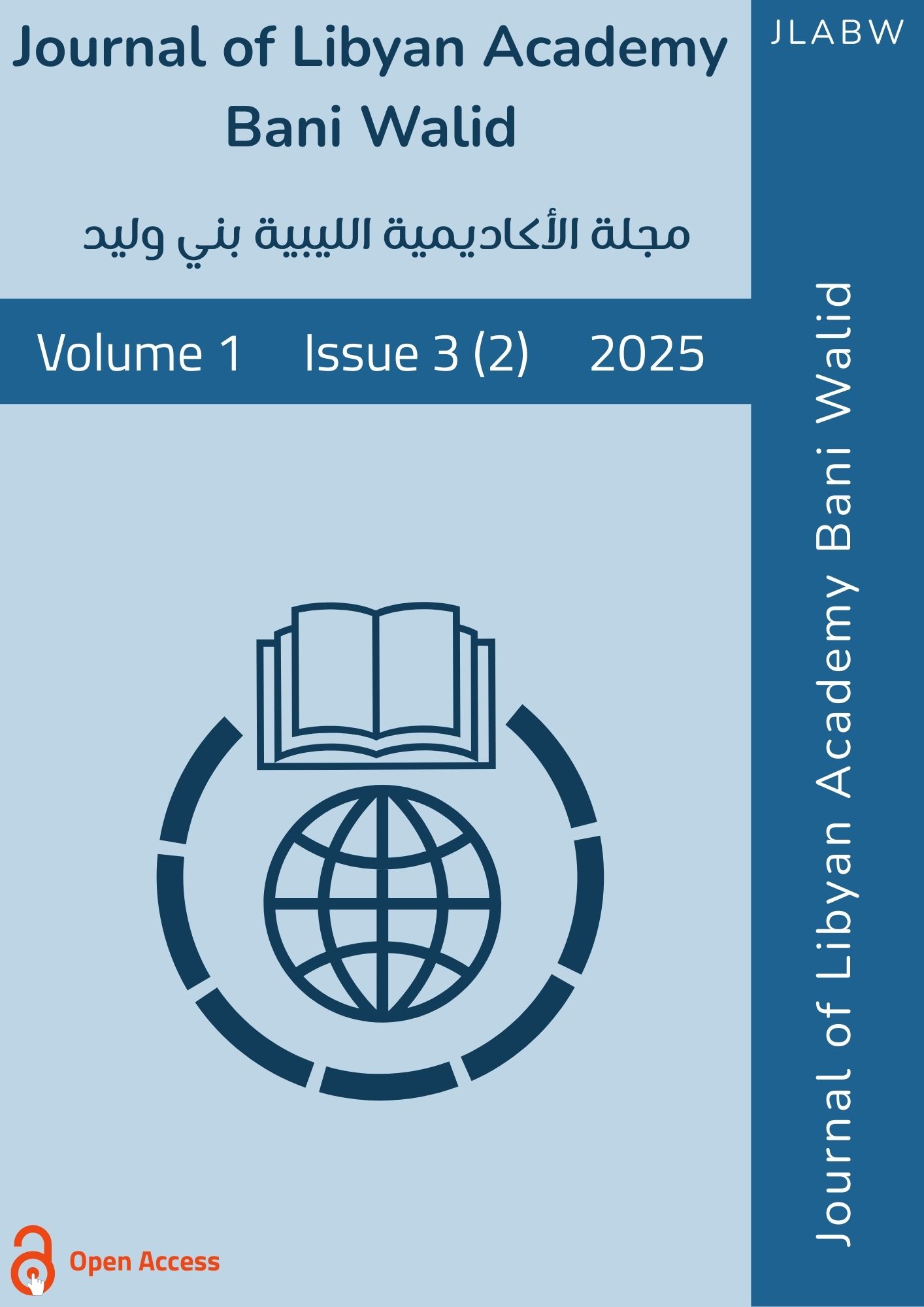Decolorizing of Malachite Green Dye and Methyl Orange Dye by Adsorption Using Seagrass as Adsorbent Material
DOI:
https://doi.org/10.61952/jlabw.v1i3.198Keywords:
Salinity, proline, maize, growth and yield components, photosynthetic pigments, osmoprotectantsAbstract
Abstract:
Water pollution caused by various contaminants has become a significant global environmental concern. Among these, dyes constitute a major group of pollutants. Addressing natural waste treatment and the removal of harmful dyes from water through adsorption are pressing environmental challenges today. Traditional adsorbents often struggle to remove these harmful dyes effectively, as their hydrophilic properties and strong bonds with water molecules keep the dyes dissolved in water. As a result, there is an urgent need to develop new, efficient adsorbents that can reduce wastewater treatment costs and mitigate the health risks associated with waterborne contaminants. In this study, the influence of key operating parameters—such as initial dye concentration (10–70 mg/L), contact time (0–120 minutes), adsorbent dosage (0.15–0.35 g), and pH level (3–9)—was examined in a batch system. The adsorption data were successfully characterized using Langmuir and Freundlich isotherm models. Additionally, adsorption kinetics were analyzed through pseudo-first-order and pseudo-second-order models to evaluate the behavior of Malachite Green (MG) and Methyl Orange (MO). The findings revealed that removal efficiency improved with increased adsorbent dosage, prolonged contact time, and higher pH levels. However, efficiency decreased with higher dye concentration . Regression analysis confirmed that the adsorption data aligned well with both Langmuir and Freundlich isotherm models. The kinetic analysis indicated that the adsorption process followed the pseudo-second-order model.
References
Ahmad Al Shra’ah, A. T. Al-Fawwaz, M. M. Ibrahim, & Alsbou, E. (2024). Remediation of Methyl Orange Dye in Aqueous Solutions by Green Microalgae (Bracteacoccus sp.): Optimization, Isotherm, Kinetic, and Thermodynamic Studies. Sustainability, 11(170). https://doi.org/10.3390
Aravin Prince Periyasamy. (2024). Recent Advances in the Remediation of Textile-Dye-Containing Wastewater: Prioritizing Human Health and Sustainable Wastewater Treatment. Sustainability, 16(2), 495. https://doi.org/10.3390/su16020495
Aruna, V. J., Gokul, D., Dhivya, N., Nesarani, A., Mukilan, K., Suresh, A. K., & Vignesh, M. K. (2023). Optimization Studies on Methyl Orange (MO) Dye Adsorption Using Activated Carbon Nanoadsorbent of Ocimum basilicum Linn Leaves. Journal of Nanomaterials, 2023, Article ID 7969512, 14 pages. https://doi.org/10.1155/2023/7969512
Freundlich, H. M. F. (1906). Over the adsorption in solution. The Journal of Physical Chemistry. https://doi.org/10.4236/jep.2017.84030
Ho, Y. S., & McKay, G. (2000). The kinetics of sorption of divalent metal ions onto sphagnum moss peat. Water Research, 34(3), 735–742. https://doi.org/10.1016/S0043-1354(99)00232-8
Ho, Y. S., & McKay, G. (1998). A comparison of chemisorption kinetic models applied to pollutant removal on various sorbents. Process Safety and Environmental Protection, 76, 332–340.
Ibrahim, M. B., & Umar, A. (2016). Adsorption thermodynamics of some basic dyes uptake from aqueous solution using Albizia lebbeck shells. Chemsearch Journal, 7(1), 43–51.
Iwuozor, K. O., Ighalo, J. O., Emenike, E. C., Ogunfowora, L. A., & Igwegbe, C. A. (2021). Adsorption of methyl orange: A review on adsorbent performance. Current Research in Green and Sustainable Chemistry, 4, 100179.
Khaniabadi, Y. O., et al. (2016). Low-cost sorbent for the removal of aniline and methyl orange from liquid phase: Aloe vera leaves wastes. Journal of the Taiwan Institute of Chemical Engineers, 68, 90–98. https://doi.org/10.1016/j.jtice.2016.09.025
Lafi, R., Montasser, I., & Hafiane, A. (2019). Adsorption of Congo red dye from aqueous solutions by prepared activated carbon with oxygen-containing functional groups and its regeneration. Adsorption Science & Technology, 37(1–2), 160–181. https://doi.org/10.1177/0263617418819227
Langmuir, I. (1916). The constitution and fundamental properties of solids and liquids. Journal of the American Chemical Society, 38, 2221–2295. https://doi.org/10.1021/ja02268a002
Lin, Z., Li, J., Luan, Y., & Dai, W. (2020). Application of algae for heavy metal adsorption: A 20-year meta-analysis. Ecotoxicology and Environmental Safety, 190, 110089.
Nada, N. A. E. L., Yagub, M. T., & Atibeni, R. (2024). Experimental study for efficiency of natural and modified seagrass as low-cost adsorbent for removal of malachite green dye. International Journal of Trend in Scientific Research and Development (IJTSRD), 8(2). https://www.ijtsrd.com
Saha, T. K., Bhoumik, N. C., Karmaker, S., Ahmed, M. G., Ichikawa, H., & Fukumori, Y. (2010). Adsorption of methyl orange onto chitosan from aqueous solution. Journal of Water Resource and Protection, 2, 898–906.
Veeraragavan, A. J., Shanmugavel, R., Abraham, N., Subramanian, D., & Pandiane, S. (2021). Kinetic studies validated by artificial neural network simulation for the removal of dye from simulated wastewater by the activated carbon produced from Acalypha indica leaves. Environmental Technology & Innovation, 21, 101244.
Yaashikaa, P. R., Kumar, P. S., & Saravanan, A. (2021). Advances in biosorbents for removal of environmental pollutants: A review on pretreatment, removal mechanism and future outlook. Journal of Hazardous Materials, 420, 126596.
Zhou, Y., Lu, J., Zhou, Y., & Liu, Y. (2019). Recent advances for dyes removal using novel adsorbents: A review. Environmental Pollution, 252, 352–365.






